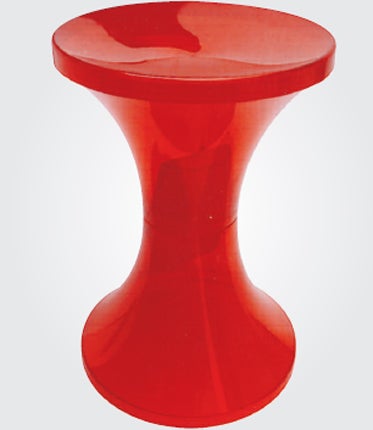Your support helps us to tell the story
From reproductive rights to climate change to Big Tech, The Independent is on the ground when the story is developing. Whether it's investigating the financials of Elon Musk's pro-Trump PAC or producing our latest documentary, 'The A Word', which shines a light on the American women fighting for reproductive rights, we know how important it is to parse out the facts from the messaging.
At such a critical moment in US history, we need reporters on the ground. Your donation allows us to keep sending journalists to speak to both sides of the story.
The Independent is trusted by Americans across the entire political spectrum. And unlike many other quality news outlets, we choose not to lock Americans out of our reporting and analysis with paywalls. We believe quality journalism should be available to everyone, paid for by those who can afford it.
Your support makes all the difference.To some, the Tam Tam is famous for being one of the cheapest items in Habitat's seating department (the stool – in store since 2002 – costs just £12).
To others, this petite, moulded plastic perch – with a removable top to allow storage inside its hourglass body – is a classic piece of late-Sixties design; famous for echoing Brigitte Bardot's similarly iconic curves when the actress was photographed sitting on an orange one at her St Tropez home in 1970.
Tam Tam's beginnings, however, were less glamorous. The stool was created in 1968 by a Frenchman, Henry Massonnet, who ran an industrial manufacturing company called STAMP, in Nurieux, a small village in eastern France. Massonnet's factory specialised in moulded plastic and his flagship productions included a coolbox for fishermen.
"He was not at all à la mode," says Lionel Raimond, who works for Branex, the Parisian company which now holds the Tam Tam's manufacturing licence. "He made the tabouret just for him, to go fishing – because it was easy to carry and you can store things in it."
Massonnet began producing the Tam Tam commercially, selling it to fishermen with modest success. And then there was the Bardot photoshoot. Suddenly STAMP was shifting 600,000 of the stools annually and in five years 12 million had been sold.
Despite its unexpected popularity, the Tam Tam nearly became a Seventies relic when the 1973 oil crisis hit the plastics industry hard. Having escaped that threat, the stool then suffered an even bigger one: fashion. "In the early 1980s," says Raimond, "that whole kitsch look became unpopular, a bit dead," and, due to lack of demand, production of the Tam Tam ceased. Until, that is, the owner of a Parisian discount food outlet called Branex instigated an unlikely revival.
Sacha Cohen (not of Borat and Ali G fame) collected Seventies furniture, although he kept his hobby separate from his grocery business. But in 2002, he bought a Tam Tam at an auction, asked about its manufacturing licence – and a new era began.
Today, the Tam Tam (and its modern descendant, the iTam Tam, a stool-cum-docking station) is still made in Massonnet's factory using the original mould. It is also a design classic. Yet Massonnet, who died in 2005, never got big-headed about his achievement; the design, he said, was ridiculously simple and "you didn't have to be a genius to think of it".

Join our commenting forum
Join thought-provoking conversations, follow other Independent readers and see their replies
Comments